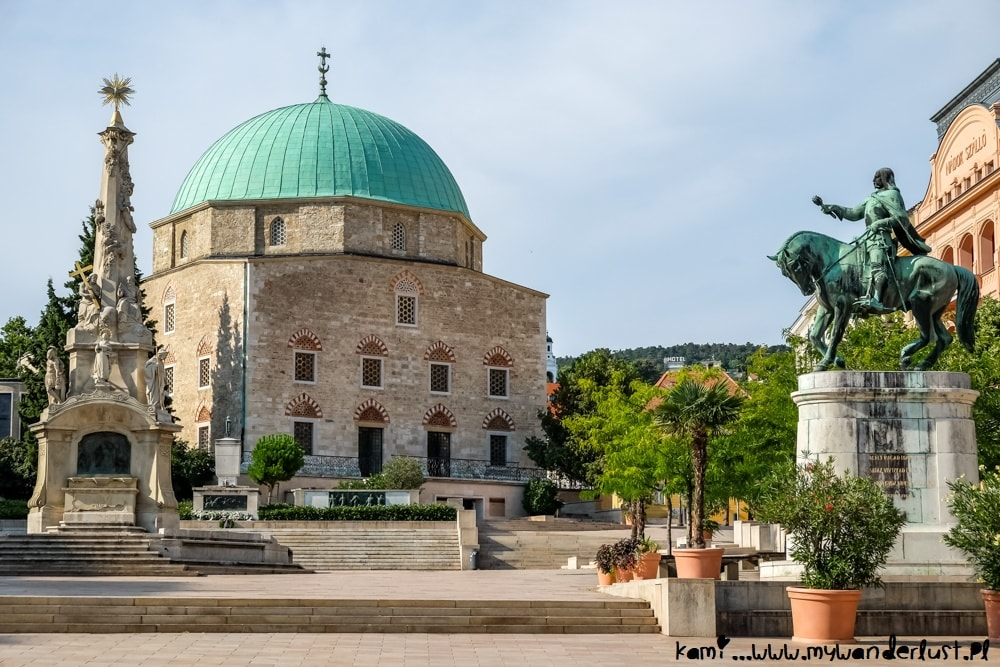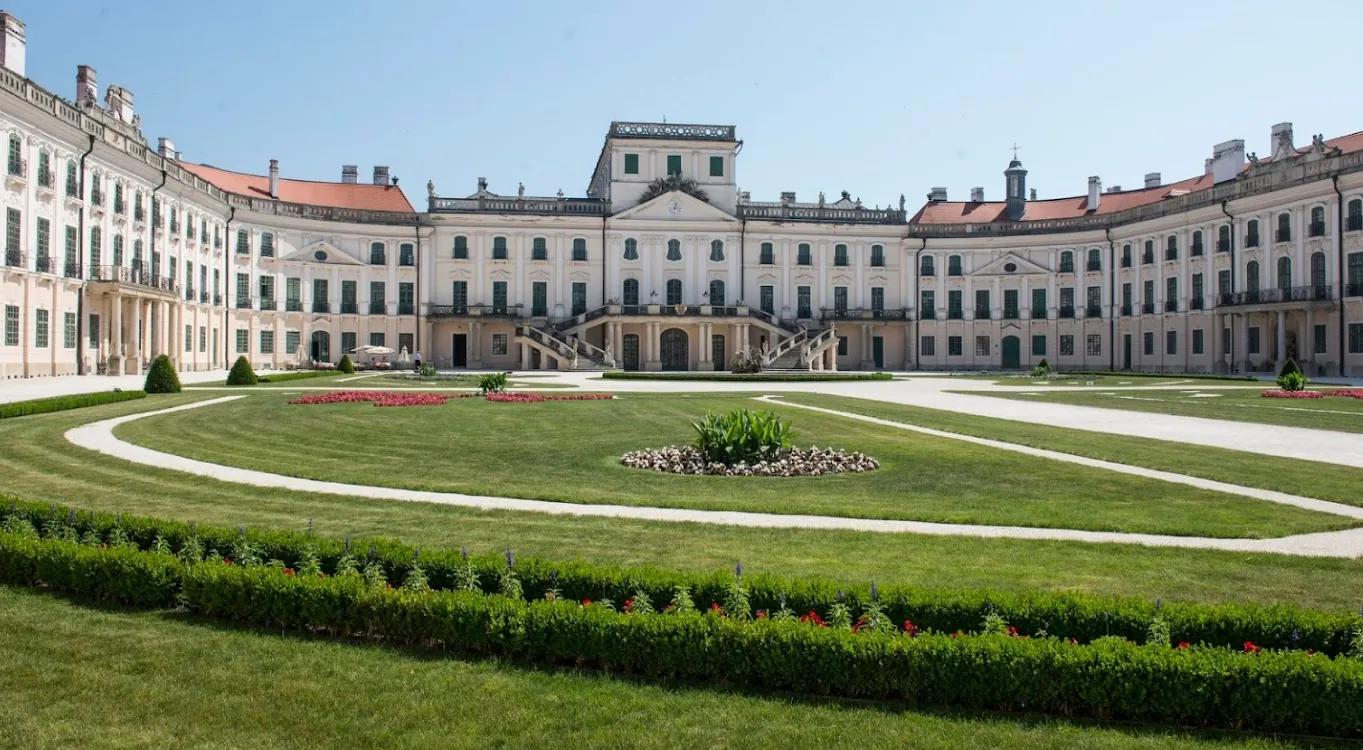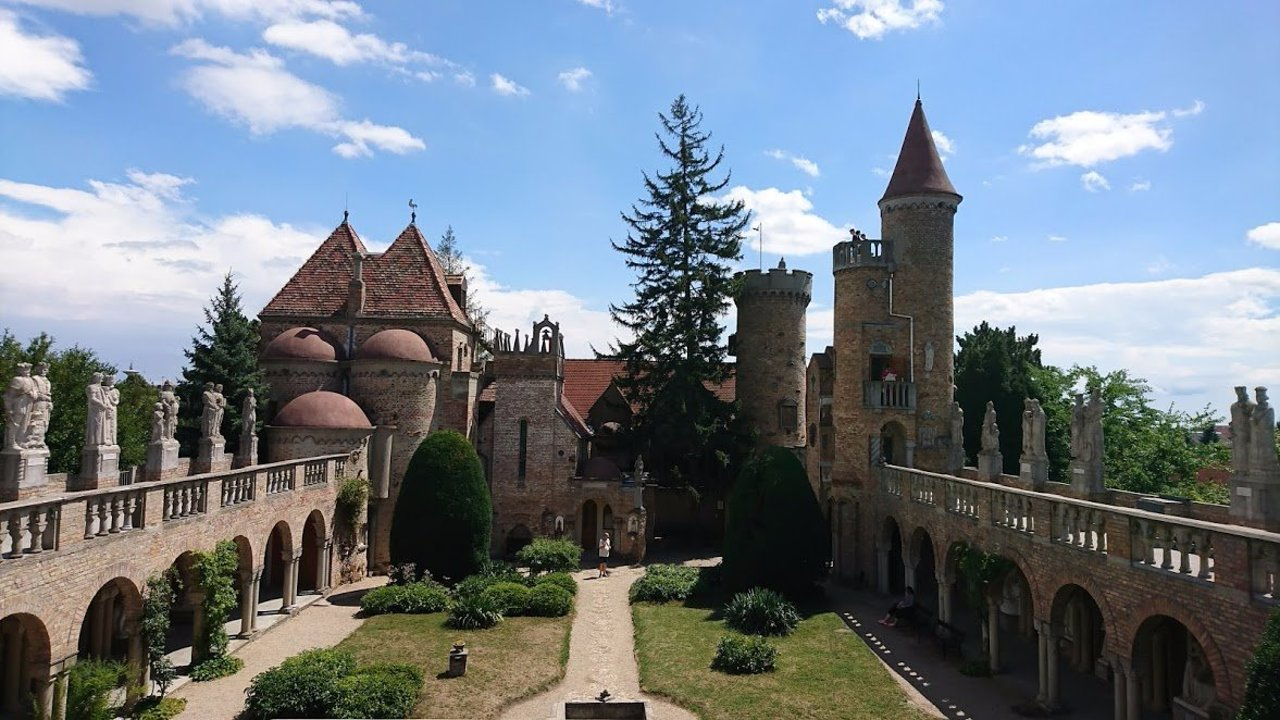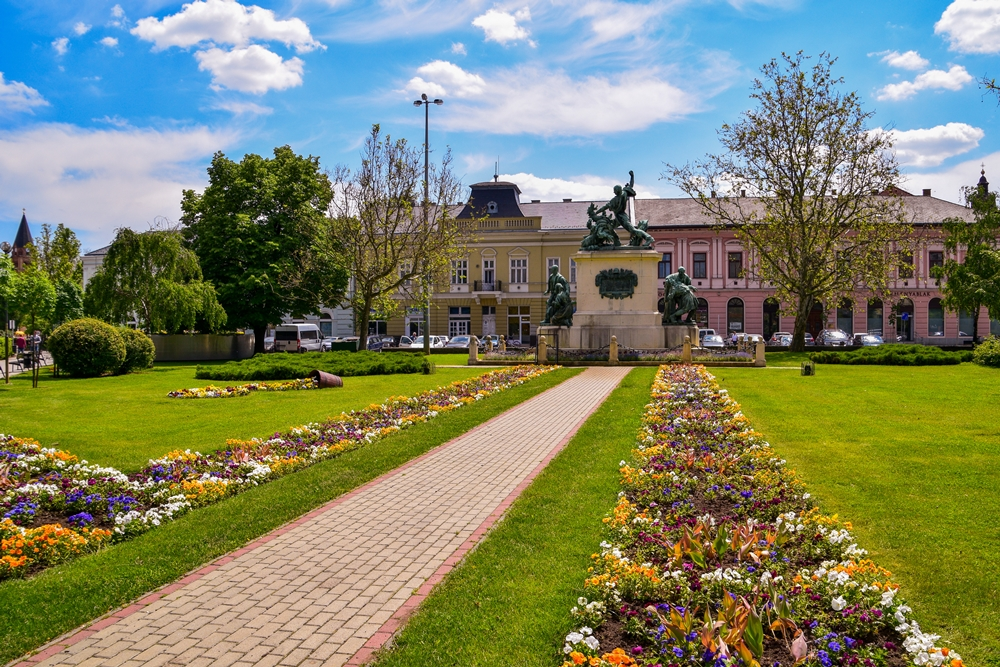Located in southern Hungary, Pécs captivates visitors with its Mediterranean ambiance, ancient history, and youthful university vibe. As one of Hungary’s oldest cities, Pécs remains filled with traces of its Roman foundations, Turkish occupations, and Gothic and Baroque architecture.
| # | Activity | Brief Description |
|---|---|---|
| 1 | Wander the Historic Center | Explore Pécs’ pedestrian lanes lined with medieval, Gothic, and Baroque buildings, art galleries, and cafés. |
| 2 | Admire the Mosque of Pasha Qasim | Visit this eye-catching mosque showcasing Islamic and Christian influences, with a climbable minaret for views. |
| 3 | Tour the Early Christian Burial Chambers | Discover underground catacombs and chambers from the 4th century, a UNESCO site with rare frescoes and carvings. |
| 4 | See the Zsolnay Porcelain Museum | Admire beautiful porcelain pieces and learn about Zsolnay’s unique pyrogranite technique in this artisanal museum. |
| 5 | Explore the Vasarely Museum’s Optical Illusions | Visit this museum dedicated to Victor Vasarely, showcasing mind-bending optical illusion artworks. |
| 6 | Sample Hungarian Wines at a Somló Winery | Enjoy tastings and learn about winemaking traditions in the volcanic Somló region, known for white wines. |
| 7 | See a Concert at the Kodály Center | Attend performances by the Pécs Philharmonic in this acoustically perfect concert hall. |
| 8 | Learn About Turkish Rule at Jakováli Hasszán Mosque | Visit this mosque from the early 1500s, with Iznik tiles and marble mihrab, and a museum on Pécs’ Turkish history. |
| 9 | Relax at Szentkirály Bath House | Enjoy Turkish massage treatments, steam rooms, and soaking pools in this Ottoman-era bath house. |
| 10 | Browse the Zsolnay Fountain Shops | Shop along Király utca for quality handicrafts, traditional embroidery, wine, and porcelains. |
| 11 | Hike the Misina Peak | Trek to the summit of this pine-forested peak for panoramic views over Pécs and surrounding areas. |
| 12 | Attend the Pécs Carnival | Experience a massive Carnival celebration with costumes, music, dancing, and floats in March. |
| 13 | Eat and Drink Your Way Through Pécs | Indulge in Hungarian cuisine and wine, with local specialties and full-bodied Villány red wines. |
| 14 | Shop for Crafts at the Cella Septichora Gift Store | Purchase arts and crafts handmade by local Hungarian artisans, including porcelain, silk scarves, and woodcarvings. |
| 15 | Wander Around the Synagogue and Jewish Quarter | Explore the restored 1869 Orthodox Synagogue and museum, and the historic Jewish Quarter. |
In 2024, Pécs continues to be an enchanting and laidback city overflowing with historic sites, museums, culture, cafés, and wine bars. From exploring early Christian catacombs to sampling fiery paprika stews, here are the top 15 things to do in Pécs, Hungary in 2024:
Wander the Quaint Streets of the Historic Center

Name and Location: Pécs’ historic center is located around Széchenyi Square, Király Street, and pedestrianized Jókai Square.
History and Significance: Dating back to Roman times, Pécs Old Town retains medieval charm with Turkish and Baroque influences. Cobbled streets lead to architectural gems and lively plazas.
What to Expect: Strolling the atmospheric streets, visitors can shop, grab a coffee, admire historic sites like the cathedral and city hall, and watch street performers on squares.
Visitor Information: The historic center is compact and walkable. Tourist info available at Széchenyi Square.
Pécs’ small historic center south of the main square is joy to explore on foot, with pedestrian lanes lined by pastel-hued medieval, Gothic and Baroque buildings. The district’s labyrinth layout and creative spirit give it an almost Mediterranean feel.
Pop into cool art galleries, craft shops, and cafés housed in the timeworn structures as you soak up the charming ambiance. This quiet neighborhood captures Pécs’ blend of styles and creativity.
Admire the Mosque of Pasha Qasim

Name and Location: The Mosque of Pasha Qasim is located next to Széchenyi Square in central Pécs.
History and Significance: Built in 1543, this elegant mosque with a dome and minaret remains from when Ottomans ruled Pécs. It is the oldest standing mosque in Hungary.
What to Expect: Visitors can admire the mosque’s Muslim architecture and interior, including intricate tile patterns and carved mihrab prayer niche that point toward Mecca.
Visitor Information: Open Tuesday-Sunday 10am-4pm. Small entrance fee. Modest dress requested.
The most eye-catching building in Pécs is the Mosque of Pasha Qasim, originally built in the mid-1500s when the Ottomans occupied the city. Converted to a Catholic church in the 1700s after Turkish rule ended, the mosque exemplifies Hungary’s crossroads of influences, with Islamic arches and Christian frescoes side-by-side.
Climb the minaret tower for panoramic views over Pécs’ red-tiled rooftops out to the Mecsek Hills. This mosque is an architectural treasure.
Tour the Early Christian Burial Chambers

Name and Location: Located around Szent István Square in Pécs, underground beneath Cathedral Square.
History and Significance: These 4th-century chambers were the gravesites of early Christian Romans. The UNESCO site provides insight into early Christianity in Hungary.
What to Expect: Guided tours walk through the underground tunnels adorned with Roman frescoes and stone coffin burial sites. A unique glimpse into the past.
Visitor Information: Open 9am-5pm daily. Guided tours in English available. Admission costs around 1200 HUF.
Beneath Pécs lie fascinating catacombs and chambers providing a window into the city’s early Christian history under Roman rule. Dating back to the 4th century AD, these UNESCO-listed tombs and crypts contain rare frescoes and carved stonework.
The Cella Septichora holds ornate wall paintings depicting biblical scenes, while the Peter and Paul Necropolis has carved mausoleums. Exploring this underground world is a highlight.
See the Zsolnay Porcelain Museum

Name and Location: Located at Káptalan utca 2 in Pécs, Hungary.
History and Significance: Zsolnay porcelain from Pécs is prized for its Art Nouveau designs. This museum chronicles the Zsolnay family factory and artistic legacy since 1853.
What to Expect: View over 600 Zsolnay pieces including colorful decorative tiles and pyrogranite vases with eosin glazing. Hands-on exhibits explain the manufacturing process.
Visitor Information: Open Tuesday – Sunday 10am-6pm. Admission 1500 HUF. Guided tours available.
Pécs has been renowned for its decorative Zsolnay ceramics and porcelain since the mid-1800s. At the Zsolnay Museum, set in the former factory, admire the beautiful porcelain pieces on display, from Art Nouveau vases to ornate tablets and everyday objects.
Learn about the patented pyrogranite technique that allowed the eosin glazes and metallic lusters Zsolnay is famous for. This museum beautifully honors Pécs’ artisanal heritage.
Explore the Vasarely Museum’s Optical Illusions

Name and Location: The Vasarely Museum is located at Káptalan utca 3 in Pécs, Hungary.
History and Significance: Devoted to Victor Vasarely’s Op Art, the museum’s illusion designs play tricks on the eyes. Vasarely, known as the “father of Op Art,” was born in Pécs.
What to Expect: Visitors can experience the mind-bending designs that create dazzling optical effects through shape, line and color. An eye-opening experience!
Visitor Information: Open Tuesday – Sunday 10am-6pm. Admission costs 1100 HUF.
Another celebrated local artist with a namesake Pécs museum is Victor Vasarely, founder of Op-Art. The sleek Vasarely Museum downtown holds the world’s largest collection of his mind-bending, optical illusion artworks.
Stare into the geometric patterns and mesmerizing designs to appreciate Vasarely’s artistic genius. The bold 1960s architecture housing the museum enhances the futuristic exhibition.
Sample Hungarian Wines at a Somló Winery

Name and Location: Somló wineries located around the Somló region near Pécs offer tastings and tours.
History and Significance: Somló is one of Hungary’s historic wine regions, producing characterful white wines from volcanic soils since the 9th century. It’s a protected appellation.
What to Expect: Taste exceptional dry yet fruity white varietals like Hárslevelű, Juhfark and Olaszrizling over a scenic wine tasting experience at vineyards like Kreinbacher or Garamvári.
Visitor Information: Book winery visits in advance. Travel from Pécs takes under an hour. Tastings have fees.
Just 45 minutes from Pécs, the volcanic Somló region produces Hungary’s distinctive mineral-tinged white wines from indigenous grapes like Juhfark and Hárslevelű. Touring a family-run winery like Kreinbacher provides intimate tastings and insight into winemaking traditions.
Try luscious sweet late-harvest Furmint wines alongside the dry whites. Visiting Somló makes for the perfect wine-focused day trip from Pécs.
See a Concert at the Kodály Center

Name and Location: The Kodály Center concert hall is located in central Pécs off Szabadság utca.
History and Significance: Named for composer Zoltán Kodály, this culture hub and concert venue hosts musical performances and events year-round, including the annual Pécs Summer Festival.
What to Expect: Visitors can attend orchestral, choral, operatic or ballet productions in the grand 1,500 seat hall. Superb acoustics.
Visitor Information: Performance schedule varies. Purchase tickets on site or online. Prices vary by show starting around 2500 HUF.
Classical music fans will love seeing a performance at the Kodály Center, a world-class 1,500 seat concert hall with perfect acoustics that hosts the excellent Pécs Philharmonic.
Named after composer Zoltán Kodály who was born nearby, the center presents orchestral and choral programs featuring talented Hungarian musicians. Enjoying a concert here is a refined way to spend an evening in Pécs.
Learn About Turkish Rule at Jakováli Hasszán Pasha Mosque

Name and Location: The mosque is located on Rákóczi út in Pécs, Hungary.
History and Significance: Jakováli Hasszán Pasha Mosque was built when Ottomans controlled Pécs in the 16th century. The regional museum inside chronicles life under Turkish rule.
What to Expect: Visitors tour the mosque and exhibits depicting Pécs during the Ottoman era through artifacts, architecture, and history. Guides available.
Visitor Information: Open Tuesday-Sunday 10am-4pm. Admission 500 HUF. Modest dress requested when visiting mosque.
While smaller than the Mosque of Pasha Qasim, the Jakováli Hassan Pasha Mosque in northwest Pécs is also worth visiting to understand the city’s Turkish occupations. Dating from the early 1500s, it contains lovely interior details like Iznik tiles fromTurkey and carved marble mihrab prayer niches.
The multicultural museum inside explains Pécs’ shifting rulers and the peaceful coexistence between Muslims and Christians for nearly 150 years.
Relax at Szentkirály Bath House

Name and Location: Szentkirály Bath House located at fürdő utca in Pécs.
History and Significance: Dating from the 15th century Turkish era, this historic spa offers therapeutic thermal bathing. Its Ottoman architecture creates a relaxing refuge in Pécs.
What to Expect: Visitors can soak in the heated indoor and outdoor mineral pools, enjoy spa treatments, or sweat in the sauna. A tranquil, restorative experience.
Visitor Information: Open daily 9am-9pm. Admission costs around 2500 HUF. Towel rental, massages available.
After exploring Pécs’ hills and historic sites, rest and rejuvenate your muscles at the Ottoman-era Szentkirály Bath House. While the baths were recently reconstructed, the relaxing Turkish massage treatments, steam rooms, and hot and cold soaking pools follow ancient traditions using the area’s rich mineral waters.
With calming arched interiors, this is the perfect spot to recuperate with a luxurious spa experience. The baths exemplify Pécs’ long bathing culture.
Browse the Zsolnay Fountain Shops

Name and Location: Located around the main Zsolnay Fountain on Ferencesek utcája in Pécs.
History and Significance: The ornate Zsolnay Pyrogranite fountain gives the shopping district its name. Surrounding streets feature boutiques selling the renowned Zsolnay porcelain.
What to Expect: Visitors can shop for authentic Zsolnay pieces like decorative tiles, vases, and figurines crafted locally using special techniques. A Pécs souvenir.
Visitor Information: Shops typically open Monday-Friday 10am-6pm, Saturday 9am-1pm. Fountain always open to admire.
The pedestrian shopping street of Király utca leading to main square is lined by beautiful buildings bearing Zsolnay pyrogranite ceramics. The street terminates at the Zsolnay Fountain, decorated in all the company’s colorful glazes and designs.
The shops and businesses along this atmospheric street sell quality handicrafts, traditional embroidery, wine, and delicate porcelains – perfect for bringing home local treasures.
Hike the Misina Peak

Name and Location: Misina Peak is located just south of Pécs, accessible via the yellow and blue hiking trails.
History and Significance: At 528m elevation, Misina provides panoramic views over Pécs and its surroundings. The steep climb up the limestone peak makes for a popular hike.
What to Expect: The trail up is short but steep in parts. Rewarding vistas of Pécs and beyond await at the top. Pack water and wear sturdy shoes for this approx 3 hour roundtrip hike.
Visitor Information: Trailhead parking near Tettye. Follow marked routes. Free to access.
Rising just outside Pécs, the pine-forested Misina is the tallest peak in the Mecsek mountain range at around 2,000 feet. Hiking to its summit rewards with gorgeous panoramic views over Pécs and the surrounding villages and vineyards.
Well-marked trails lead past abandoned quarries and caves up to the TV tower viewpoint at the top. Hiking Misina only takes a few hours and shows the idyllic natural side of Pécs.
Attend the Pécs Carnival

Name and Location: Events take place around Széchenyi Square leading up to Lent in Pécs.
History and Significance: Pécs’ annual Carnival is Hungary’s largest. The costumed celebration kicks off Lent with parades, music, food and theatrical performances.
What to Expect: For three days, visitors can celebrate with live music acts, masquerade balls, children’s programs, artsy costumes and colorful parades like the funeral procession for “Winter Witch”.
Visitor Information: Carnival takes place in February. Events are spaced around downtown Pécs. Most activities are free to enjoy.
Every March, Pécs hosts a massive Carnival celebration leading up to Lent. Locals parade extravagant costumes and masks through the streets accompanied by music and dancing. Elaborate floats and folklore groups join the costumed merrymaking.
This festive street party brings out Pécs’ communal spirit with artistry and flair. Visitors are welcome to don a mask and join in! Try to experience the Penn-Sier Carnival if visiting in early spring.
Eat and Drink Your Way Through Pécs

Name and Location: Restaurants, bars and cafes located throughout Pécs, concentrated downtown.
History and Significance: Pécs’ culinary scene reflects Hungary’s rustic traditions seasoned with Mediterranean flavors. The region is also one of Hungary’s biggest wine producers.
What to Expect: Savor hearty cuisine with rich paprika stews, fresh produce, cured meats and Hungarian wines. Don’t miss specialties like Pécs cheesecake and Zsolnay coffee served in porcelain.
Visitor Information: Reserve at finer dining establishments. Casual spots serve local wines and unique spirits.
With farms and vineyards surrounding the city, Pécs is a great place to indulge in Hungarian cuisine and wine. Graze on local specialties like savory paprika stews, pasta pockets filled with meat or cheese, and honey-nut treats.
Sample full-bodied Villány red wines from nearby vineyards. Relax at a romantic cellar wine bar or lively local pub. Pécs’ surrounded by some of Hungary’s richest regional flavours.
Shop for Crafts at the Cella Septichora Gift Store

Name and Location: Located at Szent István tér in the Cella Septichora Visitor Center in Pécs.
History and Significance: Housed in an excavated 7th century church, this shop offers high-quality handmade crafts by Hungarian artisans. Unique opportunity to buy local art and wares.
What to Expect: Find pottery, textiles, embroidery, wood carvings, porcelain, painted beads, organic beauty products and more made locally using traditional techniques.
Visitor Information: Open daily 10am-6pm alongside the Cella Septichora exhibit. Crafts priced individually.
Adjacent to the fascinating early Christian Cella Septichora burial site, this non-profit gift shop sells high-quality arts and crafts handmade by local Hungarian artisans. Browse beautifully painted porcelain, hand-dyed silk scarves, woodcarvings, woven bags, organic lavender products, and more.
It’s the perfect place in Pécs to pick up authentic local souvenirs and support small businesses. The crafts reflect talents from around the Pécs region.
Wander Around the Synagogue and Jewish Quarter

Name and Location: Located around Felsővámház utca in Pécs, just east of Széchenyi tér.
History and Significance: Dating back centuries, this small district reflects Pécs’ medieval Jewish community. The 18th century synagogue remains an active temple.
What to Expect: Visitors can see remnants like the synagogue, Rabbi’s house, ritual baths and a Holocaust memorial while strolling the historic Jewish quarter.
Visitor Information: The area can be freely explored. Synagogue visits must be scheduled in advance.
In northwest Pécs, you can visit the restored 1869 Orthodox Synagogue and explore Pécs’ historic Jewish Quarter. While the population tragically perished in WWII, the synagogue now houses a museum explaining Pécs’ once-thriving Jewish community, with a memorial garden out front.
Nearby streets like Zsidó Utca retain their Jewish heritage, with a former yeshiva building and kosher butcher. Remembering this lost culture remains important.
See the Mid-Century Art at the Victor Vasarely Museum

Name and Location: Located at Káptalan utca 3 in Pécs, Hungary.
History and Significance: Native son Victor Vasarely was a founder of Op Art. This museum devoted to his works features mind-bending geometric designs that play with perception.
What to Expect: Visitors can experience Vasarely’s signature dazzling arrays of optic illusions. His bold patterns seem to vibrate and move under your gaze.
Visitor Information: Open Tuesday-Sunday 10am-6pm. Admission is 1100 HUF.
A neat modern art museum sits within the historic Fabricius House downtown, providing a contemporary contrast to Pécs’ ancient sites. Here the Vasarely Museum has works by Victor Vasarely alongside changing exhibits of 20th-century kinetic and op art.
Contemplate intriguing pieces that use shape, motion and color to play with perception. It’s a refreshing artistic change of pace.
Conclusion
With phenomenal Roman-era sites, Ottoman and Hapsburg architecture, brilliant museums, bathing culture, art galleries, and delicious regional food and wine, Pécs provides a rich blend of experiences for travelers. Use this list as a blueprint for fully experiencing the museums, entertainment, and history of one of Hungary’s most delightful cities to visit in 2024.
From feeling the Mediterranean ambiance strolling pedestrian lanes to learning Pécs’ place at the crossroads of cultures for two millennia, absorbing its storied past is a joy. Endless creative energy also emanates from the many universities and youthful spirit of Pécs.
When planning your 2024 Hungary itinerary, be sure to include this welcoming historic hub that seamlessly fuses the fascinating old with the vibrant new.





Join the Conversation